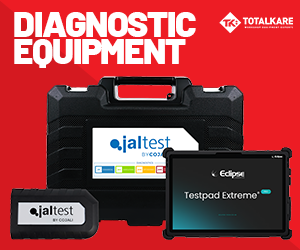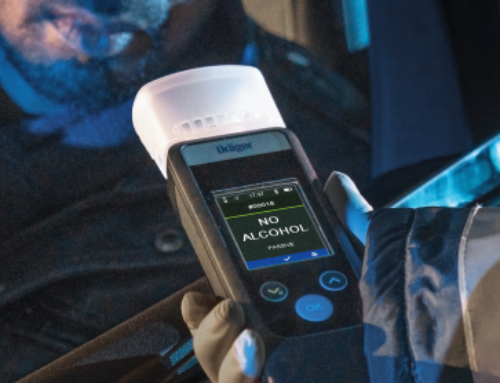DfT seeks views on relaxing C1 driving rules
 The government has opened a consultation on its latest proposals to attract more drivers to the transport sector, specifically for medium-sized goods vehicles and minibuses.
The government has opened a consultation on its latest proposals to attract more drivers to the transport sector, specifically for medium-sized goods vehicles and minibuses.
The Department for Transport (DfT) is seeking industry input on whether to grant new drivers with category B car licence entitlement in Great Britain the right to also drive category C1 goods vehicles (3.5 to 7.5 tonnes, plus a trailer with up to 750kg maximum authorised mass), and category D1 minibuses.
Should they go ahead, the proposals would be akin to the so-called ‘grandfather rights’ by which drivers who passed their car tests prior to 1997 remained able to operate a wider variety of vehicles such as light lorries or vans.
Since 1997, a separate test has been needed to drive C1 vehicles due to European Union requirements, but the DfT suggests that having left the EU, the option is now open to the UK to revert to the pre-1997 situation.
The department says that Driver CPC would continue to apply for those driving C1 vehicles for the commercial carriage of goods if the changes were to go ahead. Under current rules DCPC is not required for the non-commercial use of such vehicles to carry goods, however.
DfT also conceded that road safety impacts were possible given that: “consistently from 2005 onwards, C1 vehicles have a higher rate of accidents than other HGVs per billion vehicle kilometres.”
It said: “The removal of the test could see individuals driving C1 vehicles with little or no experience and, when considering that 30 per cent of drivers fail the test, this may increase the already higher accident rates” – hence the necessity for the consultation.
“Any changes would need to ensure continued safe use of our roads and be economically proportionate,” emphasised the transport minister Karl McCartney.
“Government does not have all the answers and, to be very clear, we have not made up our minds to do any of this.
“That is why my team and I need to hear the views of those who help make our driver licensing regime efficient and safe and we will be guided by their feedback.”
The consultation asks whether a C1 entitlement for those who pass their car tests is appropriate, and whether an age restriction should apply, as well as a minimum time period that the driver should have held their car licence in order to drive C1 vehicles.
It also asks whether an HGV medical should be required for the proposed entitlement.
The Road Haulage Association (RHA) said that under the proposals, access to driving a C1 lorry would be easier as less training would be needed – but that crucially, car drivers would not be able to operate C1 trucks commercially without additional training and compliance with DCPC, tachograph and drivers’ hours among other rules.
“It is likely that some drivers of large vans could be tempted to obtain a Driver CPC to access the right to drive C1 lorries commercially,” said Rod McKenzie, RHA executive director for policy and public affairs.
“This is likely to increase the pool of C1 drivers available.
“With the move to electric vehicles lorries coming, and the initial focus of smaller lorries covering urban areas, it is likely there will be strong demand for drivers in the C1 category in the coming 10 years.”
However, he added that the RHA was concerned about safety.
“It is in the interest of operators to ensure drivers work safely for the benefit of the staff, all road users and the reputation of the industry,” he continued.
“For a professional trucker there are other issues: safe loading and unloading, constant monitoring of vehicle condition, compliance with driving and rest rules, and understanding all driver responsibilities needs to be supported by training. That training is part of the current C1 test for commercial drivers.
“Rather than simply granting a C1 licence, the RHA believes serious consideration need to be given to requiring that all new C1 drivers undertake compulsory basic training. This will ensure a level of skill and understanding for all drivers using these vehicles, for both private and commercial driving.
“For commercial drivers the C1 entitlement could continue to be backed with the requirement to complete Driver CPC training, either through part 2 and 4 of the driving test or through 35 hours of Driver CPC training.”
The RHA encouraged members to provide it with feedback on their views on C1 licence reform.
Meanwhile Chris Yarsley, road freight regulation policy manager at Logistics UK, said that his organisation welcomed the opportunity to contribute to the review.
“Members have reported particular difficulties in recruiting drivers for vehicles up to 7.5t since the requirement for an additional test came into force in 1997,” he said, but added: “The safety of all road users must remain a top priority and Logistics UK will engage with this call for evidence to ensure there is no increased risk to road safety.”
Also included in the consultation are proposals to raise HGV instruction standards, improve pass rates, and permit those who have held an HGV category C licence for two years to drive PCVs for the purposes of maintenance and repair. The call for evidence is open until 28 October, and full details of the driver licensing review proposals can be found here.
The launch of the consultation was followed by news that 74 per cent more lorry driving tests were carried out between January and March 2022 – a total of 26,391 tests – compared to the same period pre-pandemic, January to March 2020, when 15,194 tests were taken.
This is partly attributed to DfT measures including reform of driving test rules, Skills Bootcamps and increased examiner recruitment and overtime.
Minister McCartney said: “The government took swift action and introduced 33 measures to support our vital freight sector throughout a global driver shortage and to maintain our country’s supply chains.
“Those measures have worked, with the number of lorry driver tests being taken on the rise… We’ll continue to work with the industry to remove any potential barriers to a rewarding, successful career in logistics and to boost and maintain driver numbers.”
DVSA chief executive Loveday Ryder added: “We recognise the haulage industry keeps the wheels of our economy turning. I want to say thank you to all vocational training providers and our vocational driving examiners for supporting the changes. “It’s their hard work and commitment that has allowed us to offer an additional 11,197 tests and increase the number of drivers joining the industry.”












